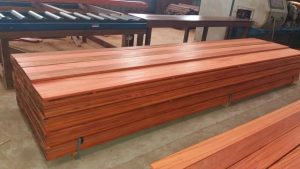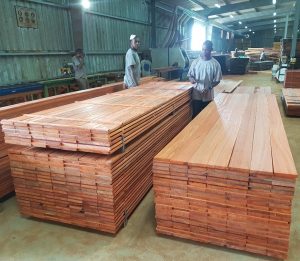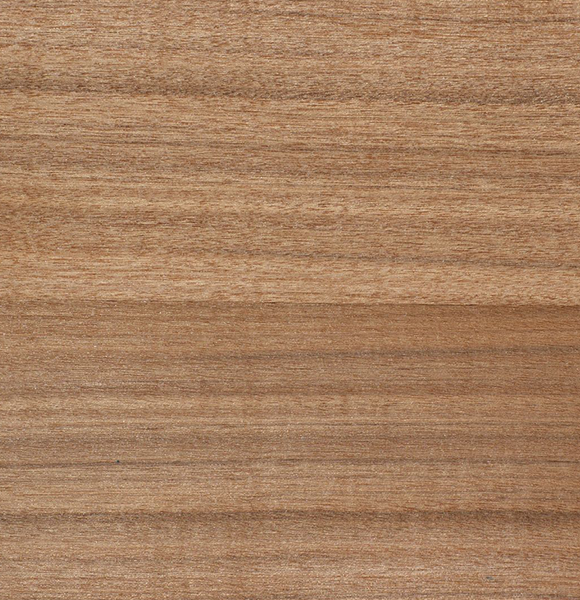BETE / MANSONIA
Bete is an African broadleaved species that can be found in Western Central Africa. On the German log import market, Bete wood is also known as Mansonia or Bété.
Description
| Botanical name: | Mansonia altissima |
| Overall character: | The pores of Bete wood are dispersed, which means that the existing vessels have no specific order. In most cases, the numerous vessels usually appear in radial groups of two to three pores. These narrow pore grooves are visible when a longitudinal section is done. |
| Color and structure: | Bete timber has a white splint with a width of 4 centimetres. The color of the core varies depending on origin and provenience. It can be light to dark brown as well as violet-black, though the color can fade as a result of light exposure. |
| Characteristics/features: | The heartwood is partly lined with matte reddish, purple or grey-green stripes. Due to the occasional violet-black color, the wood shows a significant similarity to that of the North American black walnut tree and is often mistakenly marketed as "African Walnut" in the veneer commerce. |
| Areas of use: | Because of the similarity to the North American black walnut tree, Mansonia altissima wood is often used as a walnut tree substitute. It is also used for the production of musical instruments, especially for pianos. |
| Sources: | https://www.holzvomfach.de |









